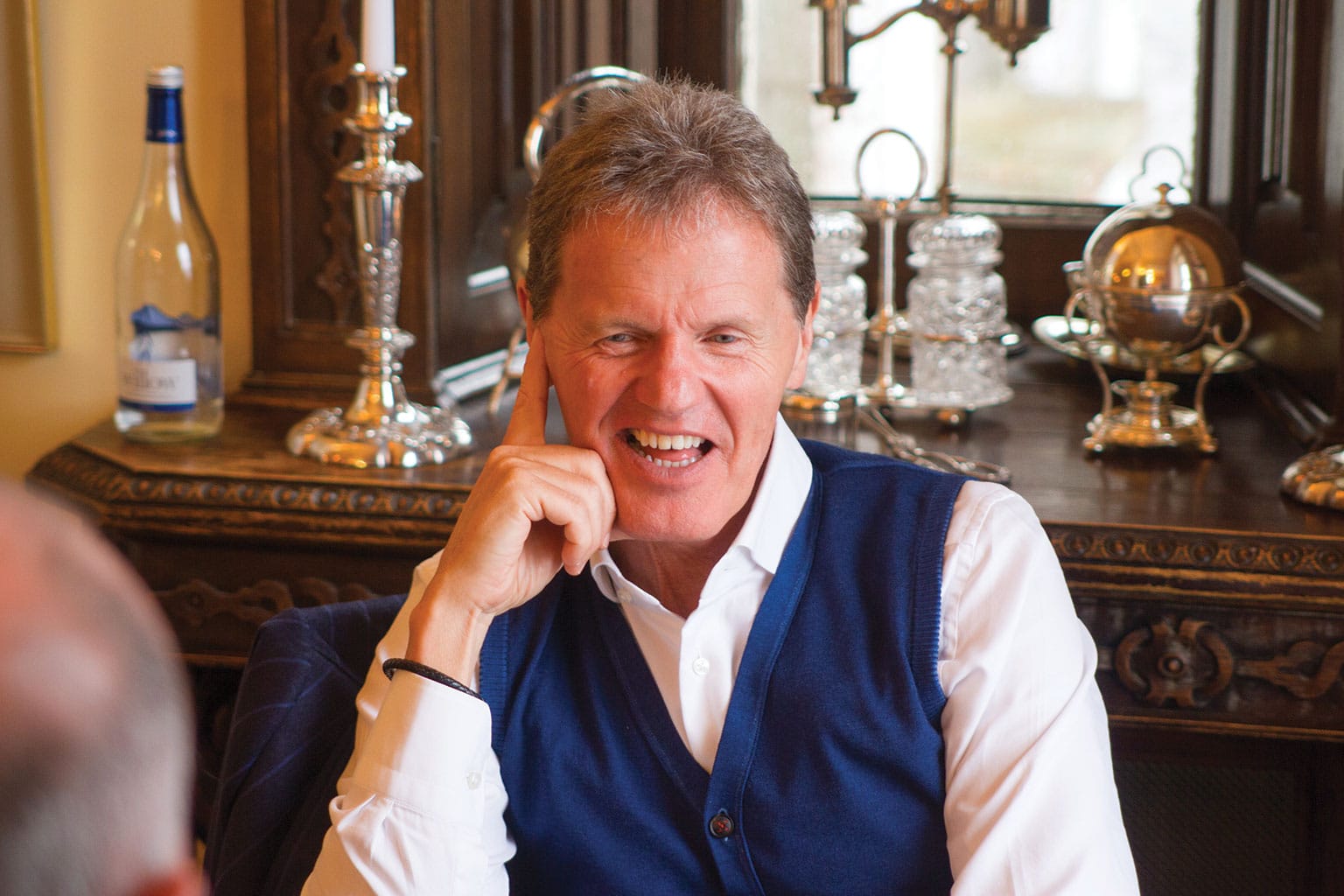Lunch with Malcolm Wilson
Few careers in any domain are as durable as this. It began more than 50 years ago in the rear seat of a Mk1 Ford Cortina… and he’s still going strong
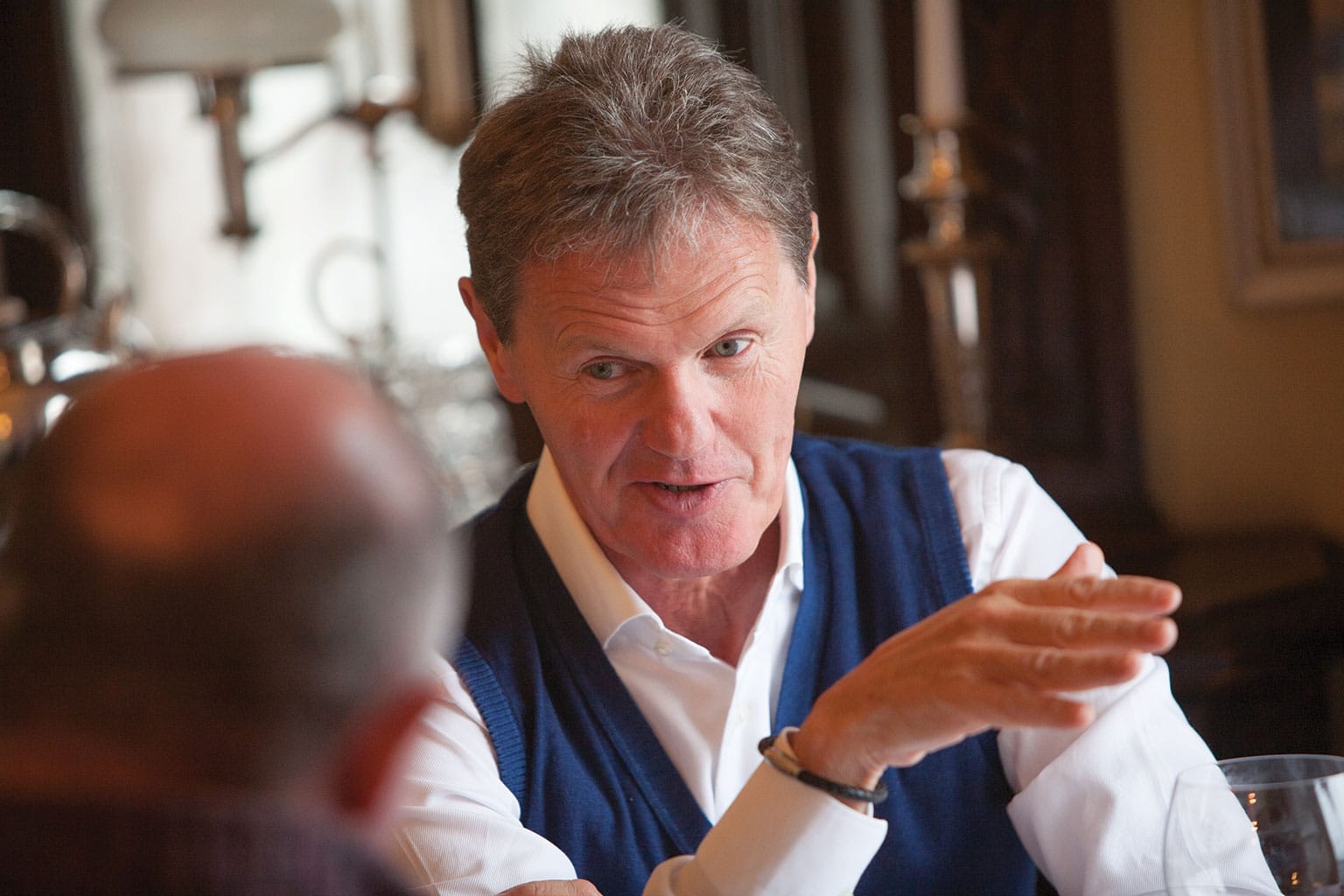
Gavin Hawarth
Given that he was versed in the fastidiously timed world of rallying from an age when most of his peers were cramming for their 11-plus, it is no surprise that Malcolm Wilson strolls into the Sharrow Bay Country House Hotel at precisely the appointed moment. His chosen restaurant is a former fishing lodge on the edge of Ullswater, about 45 minutes by road from Dovenby Hall, the stately home that became a hospital before its closure enabled Wilson to acquire it for his thriving motor sport preparation business. Today, the trim 61-year-old has 246 people working for him in Cumbria plus 38 at a secondary facility in Krakow, Poland – quite an empire for one who left school with no qualifications at 15.
An hour before his arrival Ullswater had been bathed in sunshine, perfect hill-walking weather, but things have changed. A fierce wind has whipped up horizontal rain as Wilson selects West Coast scallops followed by Herdwick lamb and [restaurant founder] Francis Coulson’s famous and original Icky-Sticky Toffee Pudding, washed down with water and two modest glasses of Pouilly-Fuissé.
Four seasons in one morning: the Lake District was ever thus. It is a wonderful part of the world, far removed from the UK’s traditional motor sport hubs. “I was born in this region and absolutely love it,” Wilson says. “The fact my business is here is down to typical Cumbrian doggedness. Over the years, so many people have said, ‘You need to move south and make yourself more accessible.’ But I wanted to prove I could make the business work locally. I’ve always believed that if something is good enough, people will travel to find it.”
The evidence suggests he’s right: as well as running Ford’s World Rally Championship programme since 1997, Wilson’s M-Sport is involved with countless rally privateers, was commissioned to build and run Bentley’s Continental GT3 racer and also developed the Ford Focus that’s currently being used in rallycross. Quite busy, then.
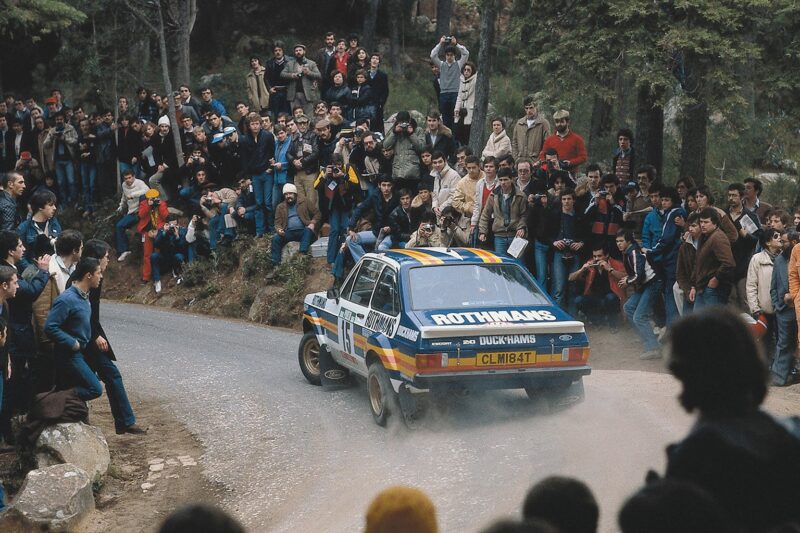
En route to fourth place in Portugal, 1981
Motorsport Images
“My interest started because my parents ran a tyre distribution and vehicle dismantling business,” he says. “In the late ’60s and early ’70s all the local rally boys would come in for spares. Fords were the thing at the time and people would turn up looking for a 1500 Cortina engine to stick in their Anglia and so on. I thought it was fantastic seeing all these cars coming in with wide wheels.
“I had no real idea what a rally was, but one day a customer arrived to buy an engine. I watched him and his pal removing it and got chatting to them. I was only 10 and wanted to know what they were doing, so they told me about a road rally they’d entered and invited me to ride along in the back. I went to ask my mum and eventually persuaded her to let me go. Road rallying was massively popular at the time and there were loads of events in our area. We were in a Mk1 Cortina and at the first junction the driver flicked the car sideways – that was it for me, I was hooked.
“I’d already started driving cars around the yard, which was one thing, but now I’d discovered the speed element. I got the bug very early and my mum said, ‘Right, if you want to do this you’d better attend navigation classes’ – and the fact they existed shows you how big the sport was in those days. I did that and started navigating from the age of 11 or 12, until I was old enough to drive. If there were any field events – autocross or autotests, anything that didn’t require a licence – I did those, too. I used cars that came into the yard and started doing my own work – I put a 1500 Cortina engine in a 100E Ford Popular, for instance, and all of this gave me a good understanding of cars and what you could do to them.
“Once I’d started to drive all I wanted to do was compete, though I didn’t initially imagine that I’d be able to turn it into a business or make a living as a driver. I had done a little bit of karting when I was younger – my dad helped found the Rowrah circuit with a guy called Iredale Edgar – but once I got into rallying I became very blinkered. There was nothing else that interested me. I had great access to spares and occasionally a juicy bit of stuff would come in – a Lotus Elan, maybe, so you could pick up a twin-cam engine. I had a great start in terms of being able to find equipment.”
At 16 he began building an Escort 1300 with which he would commence his driving career on the 1973 Peak Revs Rally, a road event on which he finished as leading novice. One year later he repeated the feat on the News & Star Derwent Rally, officially his first stage event… although he had already tasted life at the wheel across classic local terrain. “I was co-driving for a local guy in a Mk2 Cortina when we broke down in Kielder,” he says, “and we had to wait for the crew to arrive to get going again. The rest of the competing cars had long gone, so the driver asked if I wanted to take the wheel to the end of the stage – you can imagine what that was like at the age of 14 or whatever I was.
“In all I think I did only three road rallies, because after I got a taste for the stages that’s all I really wanted to do. I wasn’t particularly bothered about asphalt rallies either, if I’m honest, I just wanted to be on the gravel!”
For 1975 Wilson kept the same Mk1 Escort, albeit with the 1300 swapped for a twin-cam. “Back then there was a thing called Ford Rallyman of the Month, which earned you vouchers to get parts from Ford Rallye Sport,” he says. “I did the Lakeland Stages, a national championship round, and finished second in my old Mk1 to John Taylor. That result got me Ford Rallyman of the Month, then I had a few seconds and thirds on Scottish Championship events, so I got recognition quite quickly. Towards the end of 1975 people had started to take note and Ian Parry, later a co-director with David Richards at Prodrive, was at that time with Castrol. He was the first guy to offer me support and acknowledge my potential. For 1976 I still kept my old Mk1, but now with a 1700 BDA, and won the Lakeland Stages and a few other events, which helped me win another Ford Rallyman of the Month award. At the end of ’76 Ford was looking for some youngsters to drive the new droop-snoot RS2000 in Group 1 – myself, Graham Elsmore and David Lang were selected. It wasn’t a paid drive, but Ford provided the car, I maintained it and did the 1977 British championship.”
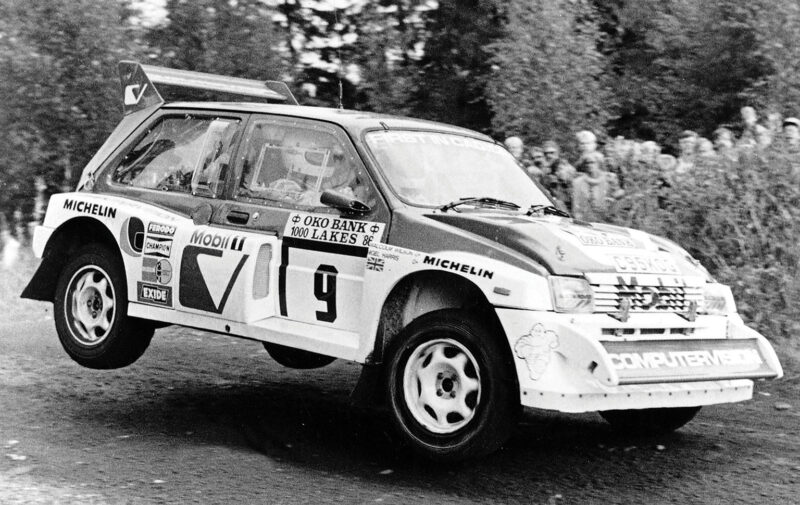
Three-year deal with Austin Rover was cut short when Group B cars were banned from rallying
He also made his WRC debut that season, on the RAC Rally.
“My two big targets in ’77 were to score class wins on the Scottish and the RAC and I managed both. I put a tremendous amount of effort into the RAC in terms of preparing the car, training, practising wheel changes and so on. It was an incredible rally and everything ran like clockwork until one of the Dalby stages on the final morning. I got a puncture early on, but all that pre-event practice paid off. I didn’t win the championship, for which the prize was a fully paid drive in 1978 – Graham Elsmore scooped that, but Ford still helped me with limited funding.
“They then offered me a favourable price on Billy Coleman’s 1976 Escort Mk2, which I campaigned successfully in the national championship – winning it for two years on the trot. I had some fantastic runs in 1979, finishing second on the Scottish and leading the Welsh, and at the end of the season Total decided it wanted to increase its rallying involvement. For 1980 I started my own team on a formal basis, still based in the family yard with a full-time staff of two and an assortment of weekend warriors, and on the Scottish I was fighting for the lead with Hannu Mikkola and Ari Vatanen. I’d just got ahead of Ari, into second, when I had a massive accident, running wide and hitting a bridge parapet. It impacted the end of the chassis rail and bent the car back into my feet, breaking both ankles. That put me out of action for a time, which was disappointing, but I got home to discover that David Richards wanted to see me. Rothmans was looking to get into rallying and he was very involved in setting up a team. He told me they wanted me in one of the Rothmans Escorts, with a limited WRC programme in David Sutton-run cars. That was a great boost.
“On my comeback event in Scotland I finished second. I wasn’t worried about crashing, but was apprehensive about how I’d feel when I really had to press the brake pedal hard, wanting to know that I was still OK. I never thought about the accident side at all. It was just about getting my head around rallies again after a four-month layoff. Next time out, on the Pirelli Rally in September, I felt in great form and beat Tony Pond’s TR7 into second place. That was also a confidence booster for David Richards, in terms of my seat with Rothmans.”

Wilson developed Ford’s RS200 and gave the car a winning debut on the Lindisfarne Rally
Motorsport Images
There would be some podium finishes in 1981, but no victories, and for much of the following year he split his time between competing and developing Ford’s new – but ultimately stillborn – Escort RS1700T.
“We got that car to a very good level in terms of performance,” he says, “though the reliability was never where it needed to be. We reached a point where we were roughly 2-3sec a mile quicker than a Mk2 Escort on gravel – and when we did all the back-to-back stuff we used Hannu Mikkola’s 1979 RAC-winning car, which was obviously a proven package. On the final day we had Markku Alén with us, so he was definitely on Ford’s radar for 1983, but around that time there was a big reshuffle within Ford. Stuart Turner came back in as team manager, looked at the whole thing and asked a lot of questions. The Audi Quattro and four-wheel drive were now established in rallying, so looking back the decision to can the rear-drive RS1700T was correct, but it was another knockback for my career.
“I’d already signed to drive for Ford in selected 1983 WRC events, but I ended up hiring a Quattro for the 1982 RAC and then doing a small programme in the UK with the Escort RS1600i. I still had my contract with Ford and knew the RS200 was coming, but I also knew I needed to do something in the short term to re-establish my career. Four-wheel drive was clearly the future so I spoke to Audi UK about buying the car Stig Blomqvist used to win the 1983 British title.”
Wilson took a solitary podium finish in 1984, but the following year won all three of the BRC events he finished (there were six rounds, but the greater consistency of Russell Brookes and Jimmy McRae enabled them to finish first and second in the standings). At the same time, Wilson had busily been developing Ford’s new low-line RS200 4×4 and gave the car a debut victory on the Lindisfarne Rally.
“Ultimately the RS200 could have been fantastic,” he says. “It was brilliant on the toughest rallies – the Acropolis and stuff like that – with its twin shock absorber system, low centre of gravity and double wishbone suspension. The one problem we had was weight – it was about 200kg heavier than the Peugeots. I’m sure that could have been rectified, but we had a very complex 4wd system. With development and lightening I’m absolutely confident the car could have won WRC events, no question.”
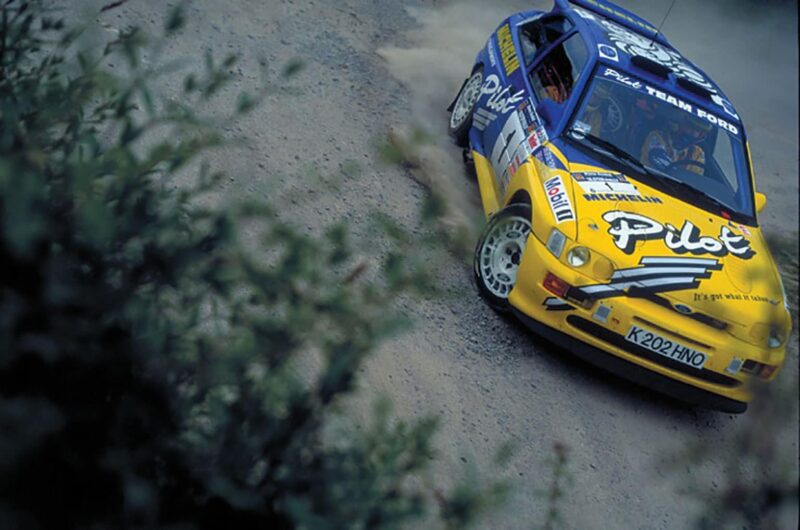
Winning in Ulster during successful 1994 BRC bid
While developing the Ford, however, he had also been approached by Austin Rover motor sport boss John Davenport, about driving the new MG Metro 6R4. “It was very, very difficult to think about leaving Ford,” he says, “because I’d been with them for so long. I had similar offers on the table from both companies, but I went to test the 6R4 at Gaydon. In those days we didn’t have the internet, smartphones or social media, so you could do stuff like that without anybody finding out. At that stage we were having lots of problems with the Ford, then at Gaydon I drove the 6R4 all day without the slightest hitch – it was 100 per cent reliable, which gave me a difficult decision to make.
“I told John I had a very clear plan. In the first year I wanted to learn the rallies and didn’t want to push too hard, except perhaps on the RAC, then the idea was to go a little harder in year two and try for the title in year three. There was also the chance to do the 1985 RAC in a 6R4, so I decided to sign. You can imagine how that felt, given the strength of my links with Ford, but my business was still ticking along in the background and a lot of that involved Ford so we still had a relationship.
“After having no problems at all during that first test, we started rallying the 6R4 and had nothing but trouble. Tony Pond and I both had problems on the Monte, then I was lying third in Sweden when the cambelt went. I had a huge shunt during testing in Greece, because of a mechanical failure, then a core plug fell out in Corsica and the engine lost all its water. I’d gone from having this bulletproof missile to something that never seemed to finish.”
Corsica also sounded the death knell for Group B, the FIA announcing that the category was to be axed at the year’s end following the accident that claimed the lives of Henri Toivonen – Wilson’s team-mate in 1980 – and co-driver Sergio Cresto.
“That was a very tough time,” he says. “Henri was the most naturally gifted driver – he had incredible ability. He wasn’t like most Finns – he was as good on asphalt as he was on gravel, and perhaps even better.”
Had Wilson sensed that speeds were escalating beyond reason?
“No,” he says. “The cars were wild and awesomely brutish, but never felt too quick when you were at the wheel. OK, I didn’t try a 600bhp Lancia Delta S4 – I drove the 6R4, RS200 and Sport Quattro, and the Audi was a handful. Having said that, it was incredibly satisfying to master. They weren’t at all like the current cars. Nowadays, you turn and it goes. If it doesn’t, the driver will want the engineer to explain why. The cars are all pretty much the same today, too, but back then they had different characteristics. The Quattro had what, 100kg or so hanging out past the front axle? They were all so different in terms of set-up, transmission and handling. It was a challenge and the pre-Sport Quattro was the biggest of all, with no anti-lag. Trying to get the best from a car with massive amounts of lag and hardly any power below 5000rpm was a real test. It was like learning to drive again, but when you crack it…
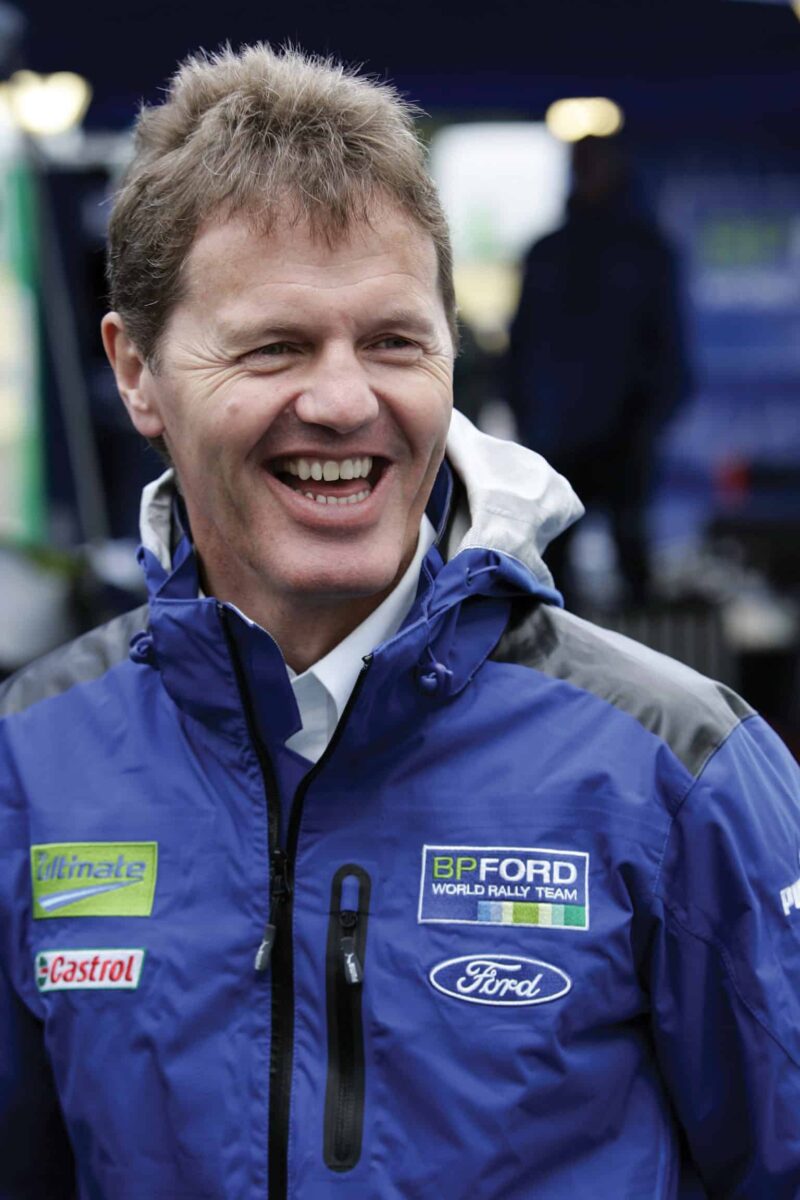
Wilson the team boss
Motorsport Images
“The Quattro gave me my best ever sense of personal satisfaction, though the Escort was the most fun in terms of what it was and the sound it made. To this day, nothing sounds as good to me as a BDA at full chat around 8000-9000rpm. That’s absolute music.”
With Austin Rover withdrawing as GpB fizzled out, Wilson was back to square one.
“I had nothing lined up for 1987, but then Peugeot asked me to do some BRC rounds in a 205 and GM came in with an offer to drive an Astra on the RAC and also for the following two years. I didn’t have much else on the table and they had some interesting plans, including an opportunity to do some WRC events. Those two years with GM were fantastic. Even though I was only in an Astra, we had some fantastic results because I was driving for a great bunch of committed individuals. It was one of the best teams with which I’ve been involved. We had some stunning results for a two-wheel-drive car – third in New Zealand and sixth in Australia in 1989, second on the Scottish, 10th overall on the RAC and first two-wheel-drive car, ahead of quite a few Sierra Cosworths. That’s when Ford came back to me about a new programme, so the results hadn’t gone unnoticed.”
He would spend the balance of his driving career with Ford, finishing second in the 1993 British Rally Championship before finally winning it one year later. “That was a box that absolutely had to be ticked,” he says, “and once I’d done that it was time to move on. My last rally was the 1995 RAC. I’ve always had goals and always said I’d stop driving when I was 40, irrespective of what I was doing. I probably didn’t achieve as much as I should have done as a driver – and if I hadn’t done that by the time I was 40, I certainly wasn’t going to do it later.”
Then still known as Malcolm Wilson Motorsport, his team was having considerable success with customer programmes – winning 11 titles around the world from 1994-96 – and Ford initially asked him about running the factory rally team. “We went a long way down the line and they wondered whether I’d consider running the Ford WRC team from Boreham, because they didn’t think it would be possible from Cumbria. We agreed terms, but one Sunday night I was chatting to my wife Elaine and said, ‘Right, I’m not going to do this.’ I’m sure she was relieved, though she didn’t say as much, and the next day I called to tell them I wasn’t going to accept the deal, imagining that would be it in terms of getting any more work from Ford. I’d just have to get on and run my business for privateers.
“Then in 1996 we went to Finland and finished third with Jarmo Kytölehto, while the works Fords didn’t feature. We just did our own job and finished on the podium, an incredible achievement for a private team, and after that Ford spoke to me again about a works deal. I didn’t think it would ever happen – and didn’t believe it until I had the press release in my hand. I’d never told anybody else, because we’d been down this route in the past, but I was doing a Ford forum in London before the Rally GB and somebody asked me what I thought would happen with the Ford WRC programme, ‘because it was such a mess’, but they didn’t know about the contract I had in my pocket.
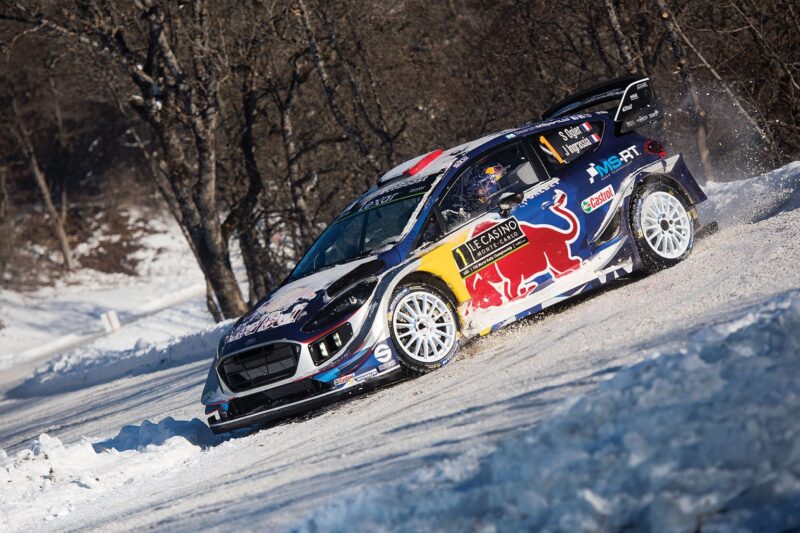
Ogier won on his M-Sport debut on Rally Monte Carlo
Red Bull
“None of my 18 staff had any idea and when I drove back the next day Elaine had arranged for them to meet me. I opened a box of champagne and said, ‘Right, this is what we’re doing… but there will be no holidays over Christmas or New Year.’ By the time we got to Monte Carlo we had more than 100 people, including weather crews and so on. We had growing pains, as any business would, but we finished second in Monte Carlo with Carlos Sainz, a few seconds behind Piero Liatti, and Armin Schwarz was sixth – so that was a good start.”
And 20 years on, with the team long since rebranded as M-Sport, he’s still running Fords. For much of that time the WRC has been dominated by three drivers – Tommi Mäkinen and the two Sébastiens, Loeb and Ogier – but M-Sport Fords have taken more than 50 outright victories (new recruit Ogier notched up the 51st in Monte Carlo this year) plus back-to-back successes in the championship for manufacturers in 2006-07. During that time Ford has run several of rallying’s all-time greats, including Colin McRae and Carlos Sainz.
“Colin was one of the fastest WRC drivers at the time and we made a big push to get him in 1998, the last year of the Escort,” Wilson says. “We felt he could have been in pole position to do all the Focus testing for 1999, but he had a water-tight contract with Prodrive. There were big expectations when he agreed to join us, which put us under a lot of pressure – although by that stage of my life I was ready for it. We then had water pump problems on the Monte, so Colin was understandably unhappy, but we went from that to winning the Safari, which for a brand-new car was astonishing.
“A lot of people struggle to understand this, but Colin was incredible on the most challenging rallies because he had amazing mechanical sympathy. People never appreciated that because of his flamboyant style. He won all the difficult ones – the Safari, Cyprus, Argentina, Acropolis and so on. OK, we built a strong car, but he had this amazing mechanical sympathy and understanding of what it could take. If I had to pick one driver who knew how to look after a car on a punishing rally, Colin would be right at the top. He didn’t set a single fastest time on the 1999 Safari, but he understood what was required. To win like that when you knew how much effort your rivals have put in, and you hear that Carlos Sainz has said to [then Toyota team boss] Ove Andersson, ‘When is that bloody Focus going to break?’ Carlos couldn’t get his head around that.
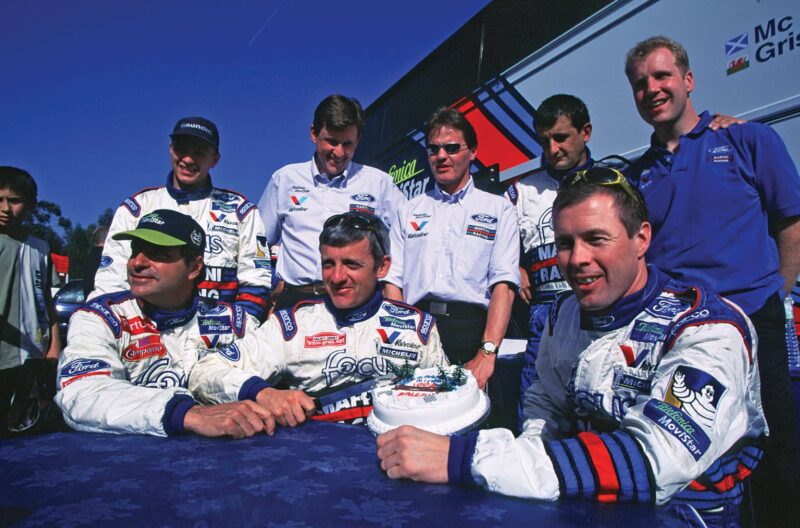
Wilson’s long Ford stint included working with both Sainz and McRae
Motorsport Images
“Colin was supremely spectacular on events like Finland or Sanremo. You’d watch and think ‘Bloody hell…’ But those events weren’t likely to inflict damage on the car – that’s when he tended to have accidents, which did…
“Carlos was never as natural a driver as Colin, but you didn’t know that until he was in your team. But his work ethic and commitment were astounding. The thing that impressed me most about Carlos, even though he had other businesses, was that his career always came first. If I rang him up unexpectedly and said, ‘I need you in Sanremo tomorrow morning to test,’ he’d be there. He never questioned stuff like that – and when he got there he’d push everybody. ‘Where’s the water bowser? We need to try this in the wet.’ Once he arrived he was like the boss, a real dynamo. He and I had some battles, because I had my vision of how we should take the car forward and he was a very strong character, but we ended up having this great relationship. Of all the drivers who pop back to see us on rallies, he’s the one who commands greatest respect. You can hear people whispering, ‘Look, Carlos is here’ – he was a big driving force in taking us forward, a huge asset, and because we had Carlos we learned how to handle the demands we’re getting now from somebody like Séb.”
Late last year a lovely video clip did the rounds on social media, showing Wilson giving his staff a pep talk. Just as it appeared to be over, he paused and said, “Oh, just one small thing… Sébastien Ogier will be driving for us next year.” He then punches the air in jubilation – and its clear the recruitment of the four-time world champion meant a lot.
“I’m still a competitor and I remain very passionate,” he says, “and we’d just had four seasons without a victory. I’d always planned to chat to the team, to talk them through what they’d done and let them know how proud they should be, but I made the announcement at 5pm and Séb had only let me know he’d be driving at nine minutes past four. He’d kept me hanging on for about six weeks, so I thought I was entitled to have a bit of fun with the staff and keep them waiting. Their response was fantastic.
“Séb reminds me very much of Carlos Sainz in terms of his commitment and attention to detail – not just him, but also his co-driver Julien Ingrassia. They are incredibly professional and it’s easy to see why they’ve been successful. Every little detail is on their radar – we’d planned to put proper winter jackets in the car for Monte Carlo and Sweden, in case of a breakdown, but they insisted on something lighter to save weight – however little that might be. That’s the level they’re at. Having the world’s best on board has given everybody a lift.”
Extra prestige was added to the M-Sport portfolio when Bentley approached the company to develop its Continental GT3 racer, which made its debut in Abu Dhabi at the end of 2013.
“We were 100 per cent rallying, 100 per cent Ford and I had no interest in diluting the business,” Wilson says. “I wasn’t looking for anything else until [Bentley motor sport director] Brian Gush called. I had no idea Bentley was looking at a racing programme. I told Brian that we had no relevant experience, but he said he’d researched us and would like to pay me a visit. I asked when and he replied, ‘Tomorrow.’ He turned up with a few people and I gave them a guided tour of our facilities.
“He returned soon afterwards with Wolfgang Schreiber, Bentley’s chairman at the time. We were having a meal in one of our boardrooms and halfway through Wolfgang walked around to my side of the table and said, ‘Malcolm, I’d like to shake your hand and that confirms we’d like you to take on the Bentley project. We’re owned by a big group but still like to operate as a small company.’ That was it. We were going GT racing. I looked around the company and found we had quite a lot of collective racing experience, through things people had done before they joined us, and 12 months later the GT3 was launched at Goodwood.” It soon became a race winner in the Blancpain Endurance Series, too.
Future M-Sport projects include construction of a new manufacturing facility at Dovenby, because the site is presently at full capacity, and an on-site test track that should be operational by the middle of 2018. Does he pay much attention to F1? “If I’m at home on a Sunday I’ll watch the start,” he says, “then have a few glasses of red wine and wake up for the finish. That’s about it. I look and keep thinking – hey, who knows in the future? – but I’ve got more than enough on my plate to keep me going for the foreseeable future.”
Given his longevity as both driver and team principal – “The first of those jobs is by far the easier” – it seems odd that Wilson started only 42 WRC events in 19 seasons. “You have to remember that things were very different then,” he says. “For one thing the British Rally Championship was absolutely massive at the time – look at the calibre of competing drivers in the late 1970s and early ’80s, with Hannu Mikkola, Ari Vatanen, Björn Waldegård, Henri Toivonen, Pentti Airikkala, Tony Pond, Timo Salonen and so on – and there were fewer WRC opportunities, with not so many rallies and relatively little manufacturer involvement. It wasn’t like it is now, when you have to sign up and contest every event. And then Ford dropped the RS1700T, the GpB ban stopped the Austin Rover project and the GM thing was just building up when they decided to withdraw, so…”
It was a golden period for rallying in Britain, but Wilson remains optimistic for the sport’s future. “We all look back and say ‘Those were the good old days’ but we have to be realistic. You couldn’t now do some of the things we used to consider routine, such as filling up with a jerrycan at the roadside and spilling half a gallon all over the place. They were great times, but attitudes to safety have moved on. Consider the Safari or the Ivory Coast, when teams used to have a spotter helicopter following each car. If somebody told me we were going back to Kenya we simply wouldn’t be able to contemplate it on the grounds of expense. Last time I was there I think it cost £78,000 for each helicopter.
“The sport has evolved. Is it better or worse? I think we’re back on the right track. The 2017 cars look aggressive and they’re fast. We’ve been through a period during which we perhaps needed a little something extra and I think we’ve now got that.”
